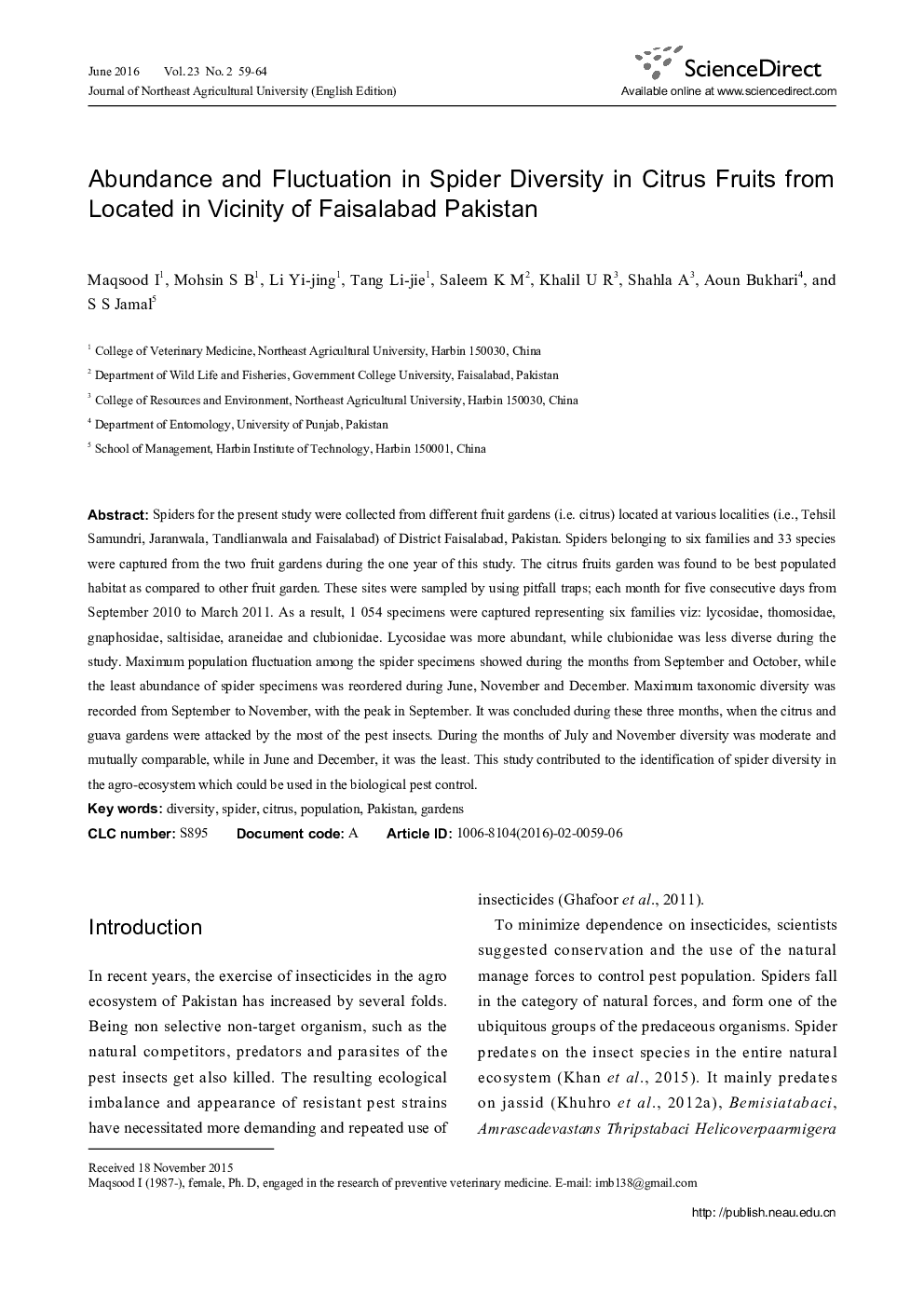| Article ID | Journal | Published Year | Pages | File Type |
|---|---|---|---|---|
| 8876272 | Journal of Northeast Agricultural University (English Edition) | 2016 | 6 Pages |
Abstract
Spiders for the present study were collected from different fruit gardens (i.e. citrus) located at various localities (i.e., Tehsil Samundri, Jaranwala, Tandlianwala and Faisalabad) of District Faisalabad, Pakistan. Spiders belonging to six families and 33 species were captured from the two fruit gardens during the one year of this study. The citrus fruits garden was found to be best populated habitat as compared to other fruit garden. These sites were sampled by using pitfall traps; each month for five consecutive days from September 2010 to March 2011. As a result, 1 054 specimens were captured representing six families viz: lycosidae, thomosidae, gnaphosidae, saltisidae, araneidae and clubionidae. Lycosidae was more abundant, while clubionidae was less diverse during the study. Maximum population fluctuation among the spider specimens showed during the months from September and October, while the least abundance of spider specimens was reordered during June, November and December. Maximum taxonomic diversity was recorded from September to November, with the peak in September. It was concluded during these three months, when the citrus and guava gardens were attacked by the most of the pest insects. During the months of July and November diversity was moderate and mutually comparable, while in June and December, it was the least. This study contributed to the identification of spider diversity in the agro-ecosystem which could be used in the biological pest control.
Related Topics
Life Sciences
Agricultural and Biological Sciences
Agricultural and Biological Sciences (General)
Authors
I Maqsood, S B Mohsin, Li Yi-jing, Tang Li-jie, K M Saleem, U R Khalil, A Shahla, Aoun Bukhari, S S Jamal,
